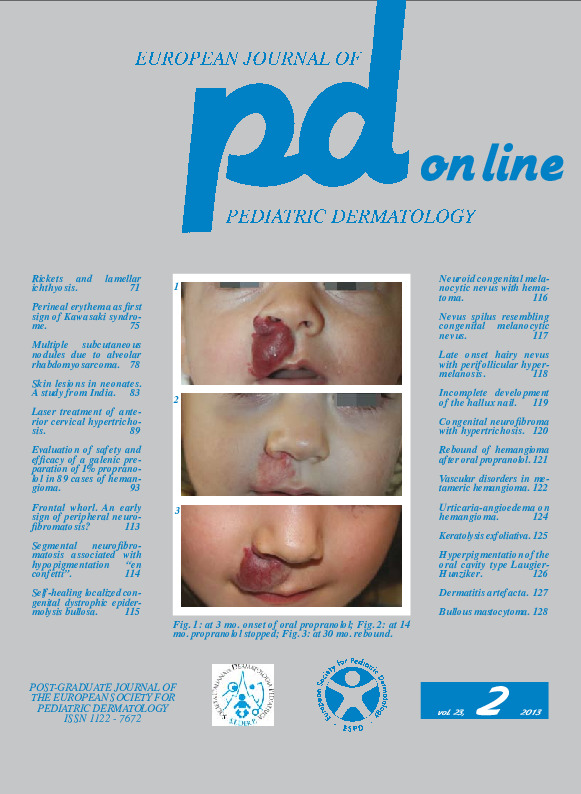Keratolysis exfoliativa.
Downloads
How to Cite
Chiriac A., Solovan C. 2013. Keratolysis exfoliativa. Eur. J. Pediat. Dermatol. 23 (2): 125.
pp. 125
Abstract
Keratolysis exfoliativa (KE), also known as dyshidrosis lamellosa sicca (1) is frequently observed during the summer season especially between 3 and 5 years, although it can be detected in adults. From an etiological point of view it has been considered a variant of the "peeling" syndrome or as a sign of atopy. The palmar region (2) is most frequently affected by small, asymmetric, scaling lesions, sometimes with a collarette and with erythema, in the absence of hyperkeratosis and slits (1). The lesions, which can be itchy, last a few days and subside spontaneously, sometimes responding to emollients. Laboratory tests are not useful, even though these usually abound in everyday practice. All patients have normal levels of vitamin A, although many doctors are convinced to face a sign of vitamin A deficiency.Keywords
Keratolysis exfoliativa

